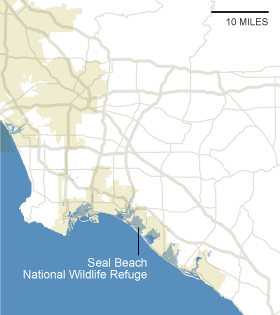Unconventional solutions is part of a series of videos (including
Conventional solutions and Cleaning up) on climate-proofing New York City providing tactics and strategies to problem-address increased climate- and natural disaster-based issues.
Recent events in Haiti, Mid-Atlantic, and Northeastern United States have revealed the commons on which we are ultimately dependent on nature.
They remind us in particular the
vulnerability of man-made landscapes, cities, infrastructural as well as socio-economic conditions. In short we need to reconsider a new approach that promotes connection of
human ecology with
natural ecology. In
Resilient Infrastructures, published in the forthcoming
second volume of Bracket, titled Goes Soft,
Neeraj Bhetia defines
human ecology as our political, economic, and social spheres, and
natural ecology as design of landscape, infrastructures, urban form, impact of environmental conditions such as geology, weather and ecosystems, amongst others.
Numerous studies have demonstrated that the
bulk of humanity is concentrated along or near coasts on just 10% of the earth's land surface. By 2025, then, — to limit to the United States in respect with the video below —
nearly 75% of Americans may live in coastal zones. As a result, these zones are becoming
sensitive to random events from pollution to habitat degradation and loss, from invasive species to growing increased coastal hazards, such as rising temperature and rising sea-levels. A recent article published in
The New York Times' Sunday Review examines consequences of rising sea-levels on the coastal United States. Consider 5 feet as a probable level in about 100 to 300 years. 7% of New York City but 88 % of New Orleans would flood. Much of Jacksonville (Florida) area's low-lying wetlands (3% of Jacksonville) would disappear too. As a consequence,
these random events will be having a serious impact on coastal United States' infrastructural system.
Humans = Human activities = Nature
Ecosophy, as
Felix Guattari termed in
The Three Ecologies, posits the balance of three scales that comprises self-understanding, the society we live in and the ecosystem we inhabit. Put it succinctly, urban spaces organized through the relation of politics, economics, ecosystems, and cultural values, as
Guattari put forward, must be re-negotiated as rooted in the model of interdependencies of human, economic life and environment throughout a series of processes. Another French philosopher,
Michel Serres, underlined interdependencies of humans, human activities and environment, in particular in
The Natural Contract,
Today our expertise and our worries turn toward the weather, because our industrious know-how is acting, perhaps, catastrophically, on global nature, which those same ancestors thought didn't depend on us. From now on, not only does it doubtless depend on us, but, in return, our lives depend on this mobile atmospheric system, which is inconstant but fairly stable, deterministic and stochastic, moving quasi-periodically with rhythms and response times that vary colossally.
(…) What serious disequilibria will occur, what global change must be expected in the whole climate from our growing industrial activities and technological prowess, which pour thousands of tons of carbon monoxide and other toxic wastes into the atmosphere? As of now we don't know how to estimate general transformations on such a scale of size and complexity. (…) [D]o we know a richer and more complete model of global change, of equilibria and their attractors, than that of climate and the atmosphere?
Here we are faced with a problem caused by a civilization that has now been in place for more than a century and that was itself engendered by the long-term cultures that preceded it; it's damaging a physical system millions of years old, a system that fluctuates and yet remains relatively stable through rapid, random, and multicentury variations. Before us is an anguishing question, whose principal component is time, especially a long-term time that is all the longer when the system is considered globally. Mixing the waters of the oceans requires a cycle estimated at five thousand years.
Soft infrastructures
The video below problem-addresses the question of soft infrastructure as possible, if not primary, responses to challenge uncertainty and instability of post-natural coastal landscapes. As stated in
The Mother Jones, soft infrastructure here (See also:
Field Journal of Architecture: Ecology; and the forthcoming
second volume of Bracket: Goes Soft) is defined as a technique that borrows from nature to improve resiliency from enlarging wetlands to creating reefs and archipelagoes to seeding oyster beds. As pointed out in previous posts, a soft infrastructure should consider
dynamism, immateriality, indeterminacy, flexibility as central in response to fluctuations, as
Neeraj Bhatia writes.
As complex feedback systems, ecosystems are non-linear and self-organizing. Not only does designing coastal infrastructure require
a specific language based on understanding and learning from global and local ecosystems, but global and local ecosystems must be considered as interconnected to address indeterminacy and flexible conditions that programmatically, temporally, politically, socially configure ecosystems.
An evidence: these proposals in this video are not sufficient to attain an equilibrium state. They may be considered as short-term solutions to cope with long-term, far-reaching issues. As we
live with immediate reckonings, upon which most of our power depends, we are incapable of setting long-term answers, to say with
Michel Serres. Targeting a long-term, far-reaching problem, thus, must at least be equal to the problem in scope,
Michel Serres continues. Yet, on the horizon of increasing climatic and geologic mutations, the difficult task for practitioners is to disentangle this triple challenge: complexity, instability and uncertainty…
credit video:
The Mother Jones | Unconventional solutions





















.gif)





